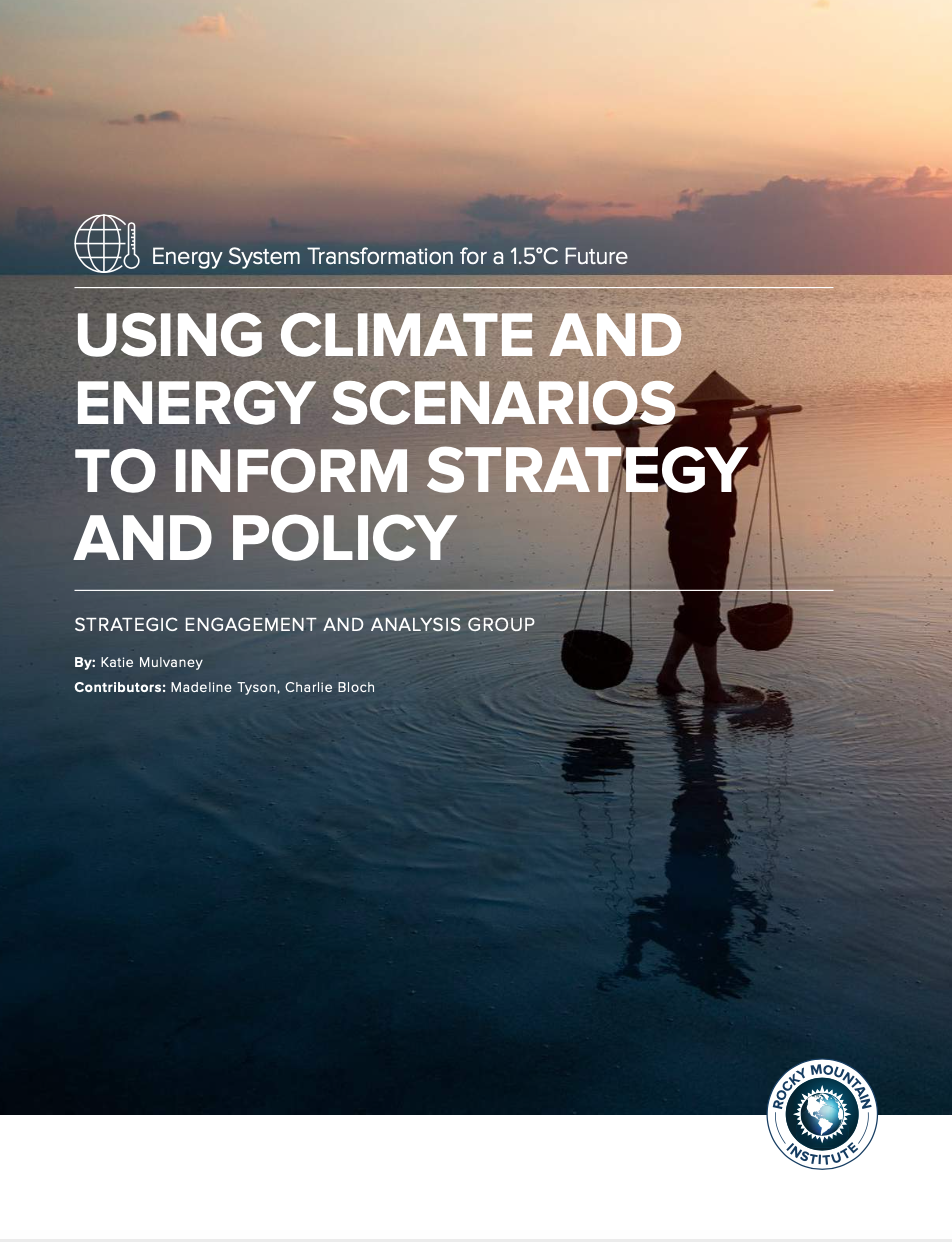Businesses, governments, and other institutions are facing increasing pressure to mitigate the worst impacts of climate change by dramatically reducing emissions in line with the Paris Agreement. The strategists, analysts, and decision makers driving an institution’s transformative policies and processes may be challenged to see past the limitations of legacy modeling and assumptions. These capture neither the massive economic opportunities for early movers nor the risks of being left behind.
This report introduces the role of climate and energy-economic scenarios in informing climate-aligned policy and strategy. It discusses how these scenarios, considering their strengths and limitations, should be used to inform planning by a diverse set of institutions, from large corporations to subnational governments. It concludes with recommendations for how strategists and decision makers can use scenarios in tandem with other information and approaches to translate climate commitments to appropriately scaled and advantageous action.
This report is part of an insight series that aims to help demystify the available tools for 1.5°C alignment, identify critical gaps that require complementary approaches, and highlight emerging opportunities to reinvent the future.
